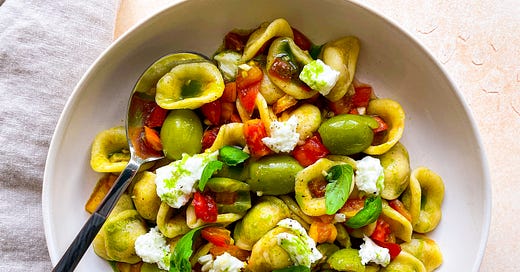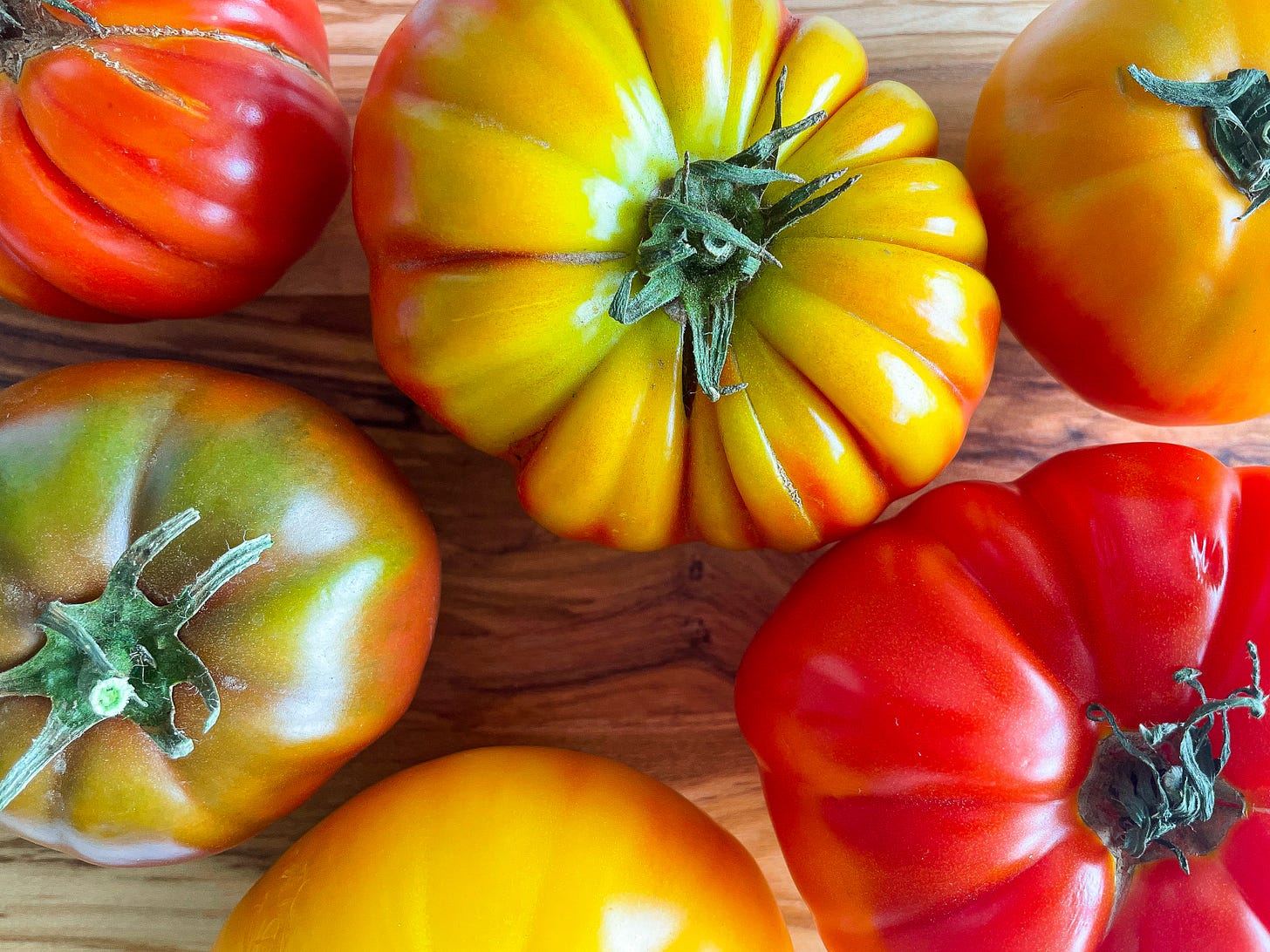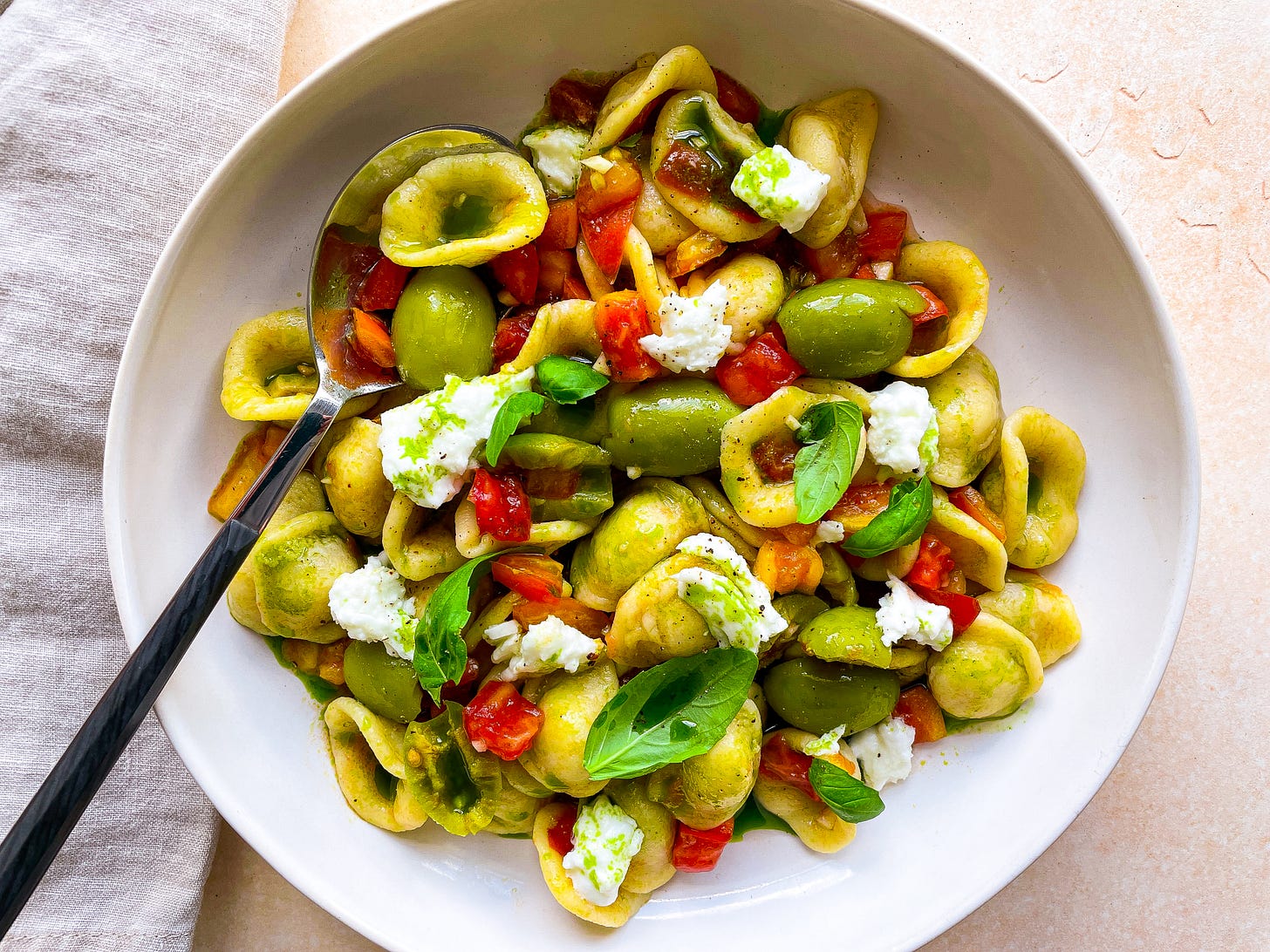Fat slices of ripe tomatoes—on crusty bread; tucked between burrata and basil; topped with tinned fish; and, of course, with pasta—is what you’ll find me eating all summer long. And every year, there’s one dish I look forward to making most: pasta al crudo, or pasta with raw tomatoes, basil, garlic, and olive oil. I love it because it’s fresh and garlicky and easy. But I also love it because it means that YES, tomato season is (still) here!
The other day I came home to a drooping basil plant, so instead of my usual crudo, I decided to revive the wilting leaves by making basil-infused oil. The technique I see used most often for herb oils is this: blanch and shock tender herb leaves in water to lock in their color, blend with oil straight from the bottle, and strain out the solids.
But there’s another technique that, thanks to a friend’s recommendation, has changed the herb-oil game for me: pour hot oil directly over the herbs, blend, and quickly cool the mixture over an ice bath. Then let the oil infuse for a few hours or overnight before straining. This method ensures that all of the herb’s delicious, delicate flavor makes its way directly into the oil instead of a pot of blanching water that goes down the drain—all without sacrificing that gorgeous emerald color!
(Important note: Always be careful when handling hot oil, and make sure to release the pressure in the blender often; if you’d rather skip it, make this recipe with your favorite olive oil instead.)
Fresh buffalo mozzarella and big, buttery Castelvetrano olives—a variety from Sicily that, I think, puts most others to shame—also give me the late-summer feels, so they made it onto the plate this year, too (if you’re not an olive fan, I hope you’ll try them anyway; they’re sweeter than they are briny). As for the pasta? I opted for orecchiette, my favorite shape to make and eat. They’re a hallmark of Puglia, at the heel of Italy’s boot, where summer sunshine reigns—not to mention their dome-like structure scoops up all of this dish’s bits and pieces particularly well.
One more thing: I’d put this recipe firmly in the lazy-weekend-cooking category—it’s easy but it takes a bit of time. It also tastes better as it sits, so if you have the patience, wait about 20 minutes before eating so the flavors can develop, or enjoy it the next day.






